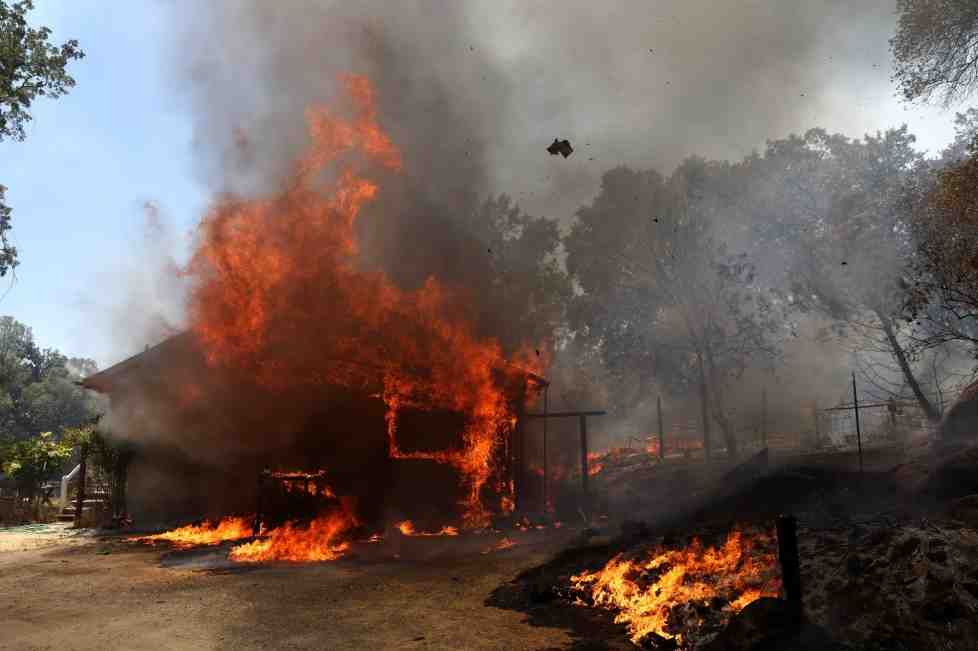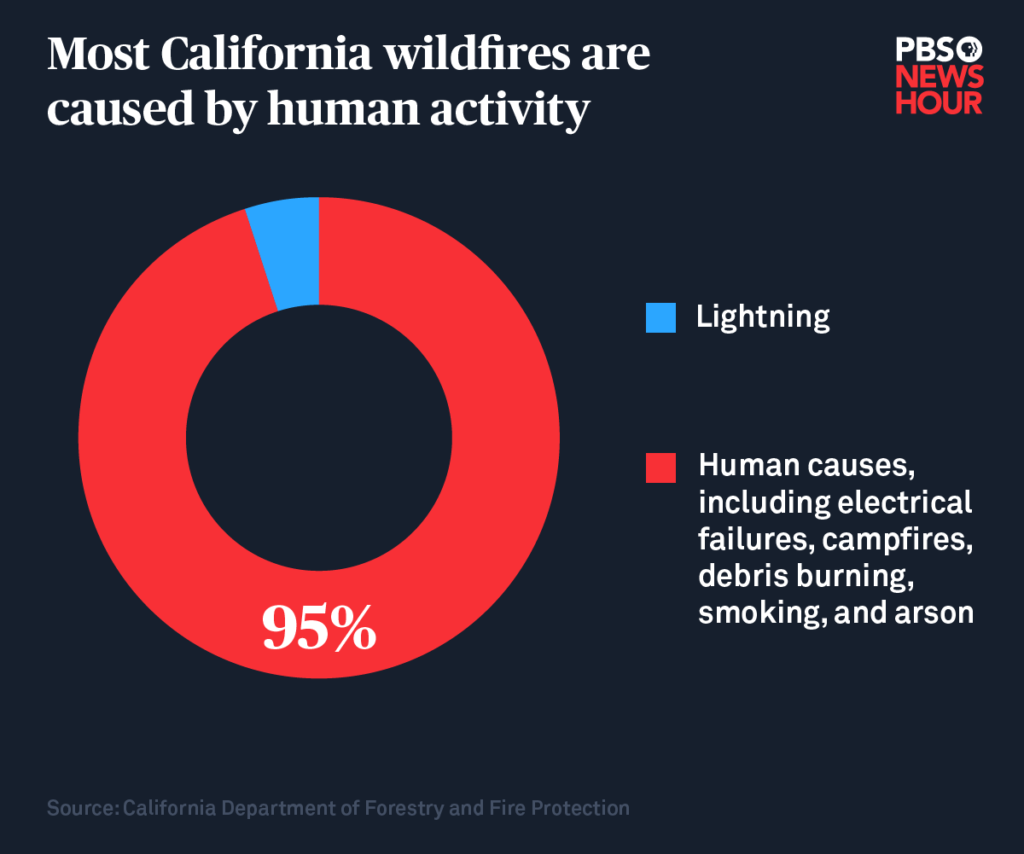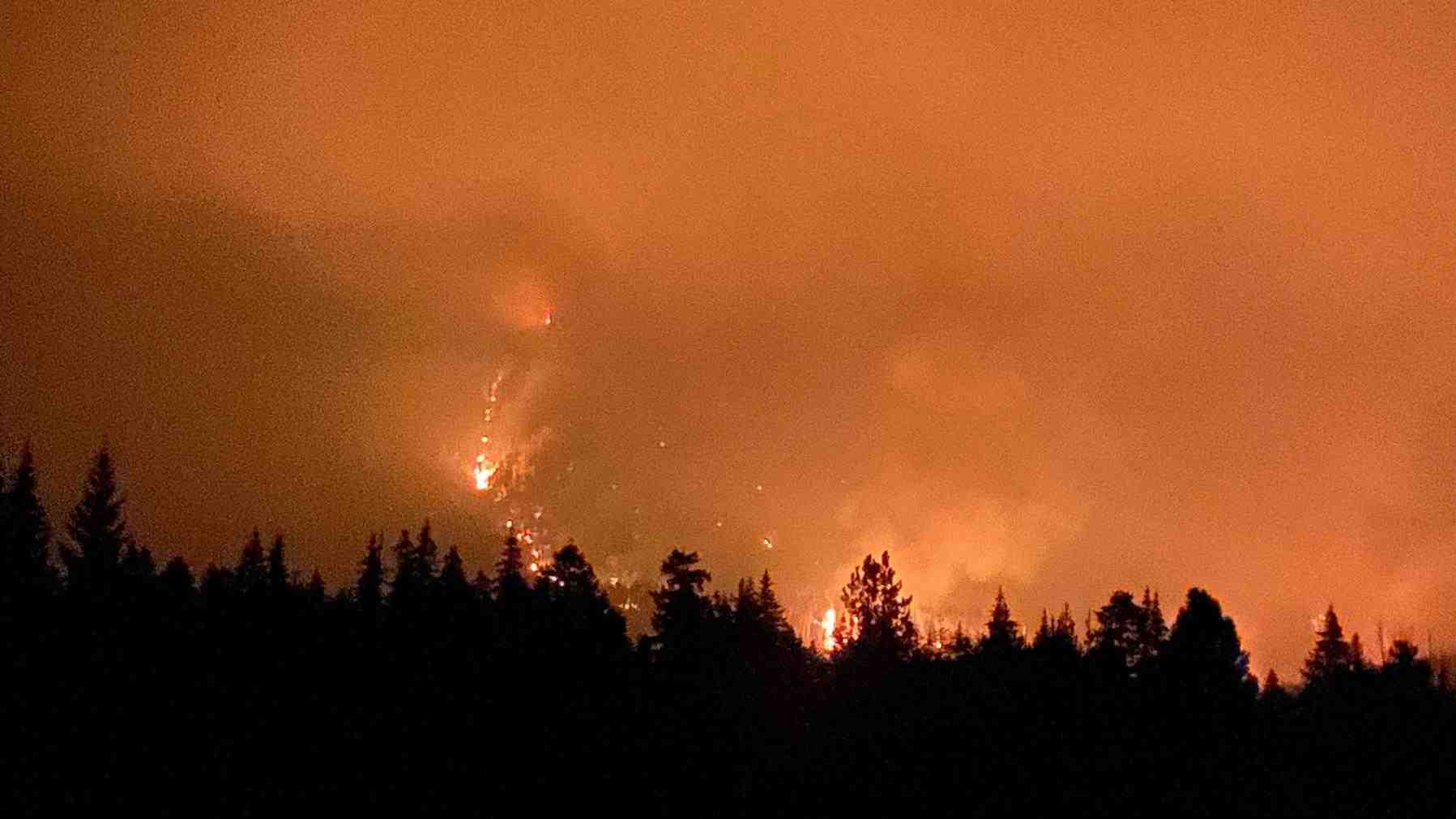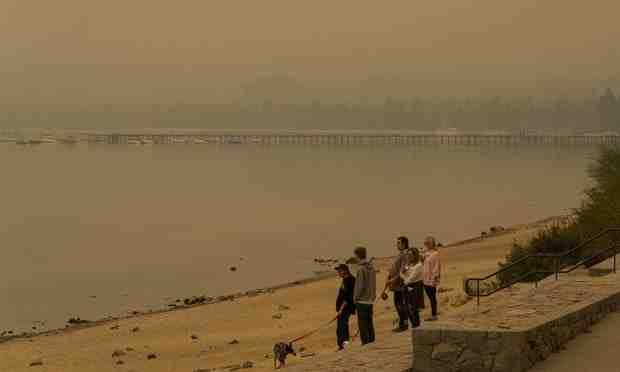Forest fires and heavy rains hit the West
FORESTHILL, Calif. — Firefighters made progress against a massive Northern California wildfire that continued to grow and threaten thousands of mountain homes Sunday, while crews also battled large blazes that covered large swathes of Oregon and Washington. in smoke Meanwhile, flooding was the problem for some communities around Los Angeles, as a long spell of dry heat finally receded, only to be replaced by intense thunderstorms that coated roads with mud and water and left vehicles stranded.
Mosquito Fire

The Mosquito Fire in the hills east of Sacramento has spread to nearly 65 square miles, with 10% containment, according to the California Department of Forestry and Fire Protection, or Cal Fire. “Cooler temperatures and higher humidity helped moderate some of the fire activity,” but stronger winds allowed the flames to drift north and northeast, according to a Cal Fire incident report on Sunday.
More than 5,800 structures in Placer and El Dorado counties were under threat and some 11,000 residents in communities like Foresthill and Georgetown were under evacuation orders.
The Mosquito Fire has also blanketed much of the Sierra Norte region in smoke. California health officials urged people in the affected areas to stay indoors when possible. Tour de Tahoe organizers canceled Sunday’s annual 72-mile bike ride around Lake Tahoe because of heavy smoke from the fire, more than 50 miles away. Last year’s trip was canceled due to smoke from another large fire south of Tahoe. The cause of the Mosquito Fire remained under investigation. Pacific Gas & Electric said unspecified “electrical activity” occurred around the time the fire was reported Tuesday.
Scientists say climate change has made the West hotter and drier over the past three decades and will continue to make weather more extreme and wildfires more frequent and destructive. In the past five years, California has experienced the largest and most destructive fires in state history.
Fairview Fire

In Southern California, cooler temperatures and rain gave firefighters battling the massive Fairview Fire about 75 miles southeast of Los Angeles a respite after last week’s sweltering heat. The 44-square-mile fire was 45% contained on Sunday. The fire has destroyed at least 30 homes and other structures in Riverside County. Two people died while fleeing the flames on Monday.
A helicopter assisting with operations on the Fairview Fire crashed in a residential backyard while trying to land at a local airport Saturday afternoon, fire officials said. The injuries to the pilot and two others were not critical.
Welcome rain, unwelcome flooding

The southern part of the state welcomed cooler weather over the weekend as a tropical storm veered off the Pacific coast and faded, helping to end scorching temperatures that nearly overwhelmed the state’s power grid.
Thunderstorms and the risk of flooding persisted in mountainous areas of the greater Los Angeles area on Sunday. But after Hurricane Kay made landfall in Mexico last week, it rapidly degraded and weakened further until it was largely gone, forecasters said.
To the north, Kay’s remains caused flooding Saturday that stranded about 40 vehicles and closed a stretch of State Route 190 in Death Valley National Park. The park was still cleaning up from flooding five weeks ago that closed many key roads.
Los Angeles County firefighters and helicopters had to rescue about 50 people Sunday night who were stranded in two dozen vehicles in a mudslide on Pine Canyon Road in the Lake Hughes area.
Bolt Creek Fire

In Washington state, firefighters were scrambling to secure resources in the battle against an arson fire Saturday in the remote Stevens Pass area that sent hikers fleeing and forced evacuations from mountain communities. There was no containment Sunday of the Bolt Creek Fire, which had burned nearly 12 square miles of forest land about an hour and a half east of Seattle. “The fire will continue to advance in areas that will not be staffed. With limited resources, there will only be spot protection as resources continue to move into the fire,” an incident report from Sunday morning said.
18 fires burning in Oregon, Washington

And the rest of the West has not been immune. There were at least 18 major fires burning in Oregon and Washington, prompting targeted evacuations and power outages near Portland as the challenge of dry and windy conditions continued in the region. Large areas of western Oregon choked by thick smoke from fires in recent days were expected to see improved air quality Sunday thanks to a returning overland flow, Oregon Public Broadcasting reported.
South of Portland, more than 3,000 residents were under new evacuation orders due to the 134-square-mile Cedar Creek Fire, which has burned for more than a month in Lane and Deschutes counties. Firefighters were protecting remote homes in Oakridge, Westfir and surrounding mountain communities. According to the Northwest Interagency Coordination Center, there were more than 400 square miles of active, wildfires this weekend and nearly 5,000 people on the ground fighting them across the two northwestern states.
Create your free account or sign in for more features.
Please enter your email address to continue
Please enter a valid email address to continue

